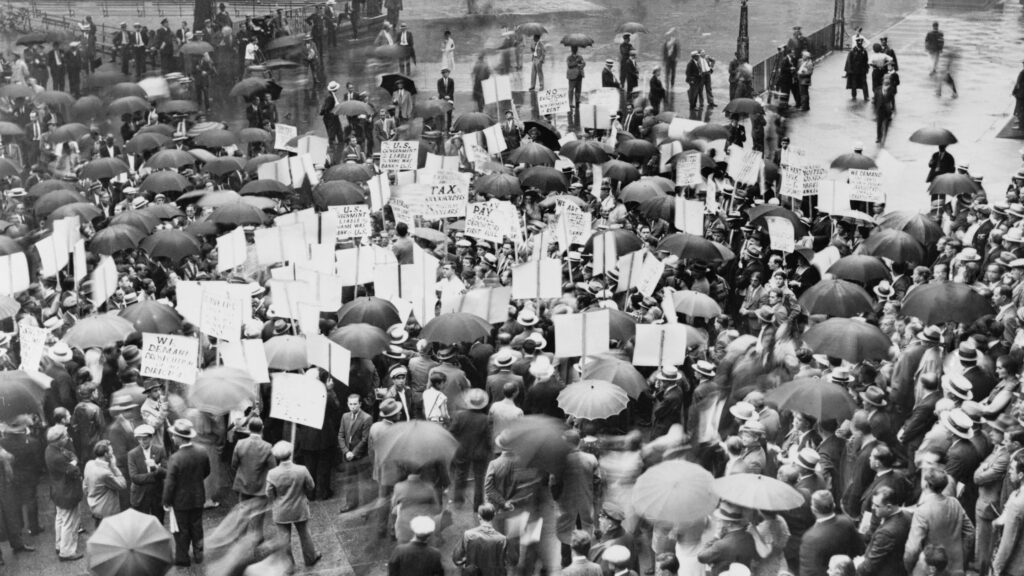What Happened During the Great Depression?

Dubbed as the worst economic crisis in modern history, the Great Depression began with the stock market crash of 1929. In September 1929, the United States and the rest of the world’s economy began to crumble as stock prices began to fall. As a result, investors panicked, creating a wild rush to sell stocks as there was to buy them.
But what happened during the Great Depression? While numerous historians and economists gave various causes, such as drought, bank failures, and consumer debt for the Great Depression, it was clear that the results were devastating, with massive unemployment and poverty rates across the country.
The New Deal: Fixing the Effects of the Great Depression
As people blamed the government for its bad policies, a rising political figure gave Americans hope: Franklin D. Roosevelt. During Roosevelt’s term, he introduced the New Deal, a series of policies and programs to fix the effects of the Great Depression.
As soon as he was elected, he made countless efforts to fix the economy by offering jobs and various forms of assistance to struggling people. The beginning of World War II in 1939 marked the end of the Great Depression. The Great Depression left a mark on the United States’ history and continues to remind people of the importance of government policies and how they affect people’s everyday lives.
Summary
- The Great Depression began with the stock market crash of 1929, and as a result, millions were left unemployed, and the poverty rate grew.
- In response, Franklin D. Roosevelt introduced the New Deal, a series of programs to restore the economy.
—–
So, the next time someone asks you, “What happened during the Great Depression,” you know the answer. Keep it up, young genius!
Need more help in History? Got assignments to finish? Let us help you excel in school. Ask your questions here and our team will try to answer them and share more information with you.